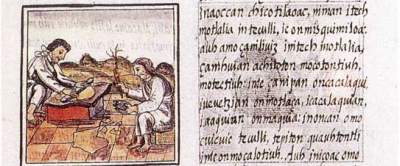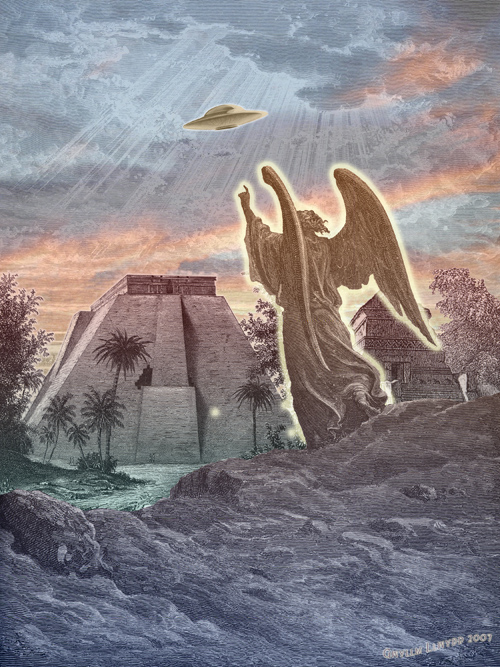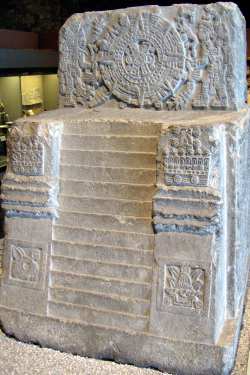★World’s Most Mysterious Book Finally Decoded★★★The Voynich Manuscript ★★

The Voynich Manuscript has been called the world’s most mysterious manuscript and the book that can’t be read. Professor Stephen Bax recently claimed to have cracked the code. Much research has been put into the fascinating 15th century Voynich manuscript. The vellum on which it is written has been carbon dated to the 15th century. Unfortunately, since it was rediscovered in 1912 not a single word of it has been deciphered.
The following is from http://www.luton-dunstable.co.uk/News/University-of-Bedfords...
Here is what is known about the Voynich manuscript, a mysterious document that has bedeviled scholars and top cryptographers for more than a century:
It consists of 246 pages of handwritten script and illustrations.
It was discovered in an Italian monastery by a Lithuanian bookseller named Wilfrid Voynich in 1912.
Here is what is not known - Just about everything else! The greatest code breakers of the last 100 years have failed to decipher the Voynich manuscript’s ornate script, or even agree on whether it says anything at all.
Experts have theorized that it was written in Europe, Asia, or South America; they have speculated that it was created by Leonardo da Vinci, by 13th-century philosopher Roger Bacon, or Wilfrid Voynich himself. When it comes to code breaking, “The Voynich is the Mount Everest of the genre and the K2 at the same time,” said Nick Pelling, a British computer programmer who wrote a 2006 book about the manuscript and maintains a website about historical cyphers.
Today, the manuscript is kept at Yale University's Beinecke Rare Book and Manuscript Library, where, according to staff, it is one of the library’s most frequently requested objects. Now that the library has put high-resolution scans of the pages online, the Internet turns up almost limitless chatter about the manuscript.
Linguists have puzzled over the script, physicists have used computerized models to analyze its patterns, chemists have analyzed its parchment, and historians have traced its ownership through the centuries.

Last month the Voynich landed in the news when a retired botanist and a retired Department of Defense information technologist proposed a new theory based in botany:
Arthur Tucker and Rexford Talbert identified 37 of the manuscript’s 303 botanical illustrations as plants that could be found in a 16th-century botanical garden in central Mexico, and argued that the manuscript was written primarily in an extinct dialect of the Aztec language Nahuatl.

The Aztec alphabet, in the sense of each symbol representing only a sound, was an introduction by the Spanish. Classical Nahuatl is the name of the language that was spoken by the people of the Aztec empire. The original Aztec language was not really written in an alphabet but a series of glyphs, as we will see in a moment.
Nahuatl is also known as Nahua, Nahuat, and Nahual. http://www.aztec-history.com/aztec-alphabet.html


Over 2000 years ago, Cholula was rising from being a village to being a city of some importance.
As the city became a place of power, many of the powerful cultures of Mexico had their turn to rule it - the Olmecs, Toltecs, and later the Aztecs, with whom the city had some alliance.
The city was once called Acholollan (in Nahuatl), meaning place of flight or water that falls in the place of flight. This has led some to believe that Cholula was founded after it's inhabitants fled from elsewhere. http://www.aztec-history.com/cholula-pyramid.html
Look at the calender at the top of the chair- some say we are at the end of the cycle. Also called the Teocalli (temple) of the Sacred War, the monument was commissioned by Moctezuma II to commemorate the New Fire Ceremony of 1507. It was discovered under Mexico City's National Palace in 1831.
The throne is incredibly ornate and symbolic. It left no doubt that the one who sat in it (if someone did - there's some debate about whether it was actually used as a throne or not) believed himself to be commissioned by the gods to be the ruler of central Mexico (if not the world).
The monument itself represents a temple. On the back is a nature scene with an eagle on a cactus (representing the founding of Tenochtitlan (Mexico City). Being seated on the throne meant being seated over the earth and the underworld, with the past behind you.
The throne represented the connection to the cult of the sun and blood sacrifice (hence the term sacred war). http://www.aztec-history.com/aztec-artifacts.html

Pre-Hispanic Mesoamerica was dominated by a Nahuatl-speaking ethnic group properly known as the Mexica. Popularized in the 19th century, the familiar term "Aztec" derives from the name of their legendary homeland in northwestern Mexico, Aztlan (Land of the Heron).
In the late 13th century, Aztec migrants settled in the Valley of Mexico, founding their capital Tenochtitlan on an island in Lake Texcoco. Around 1428 they formed the Triple Alliance with the neighboring kingdoms of Texcoco and Tlacopan. Under the reign of the ninth emperor Motecuhzoma II Xocoyotzin (ruled 1502–1520), the Aztec Empire reached the pinnacle of its wealth and size, stretching from the Gulf Coast to the Pacific Ocean and south to coastal Chiapas.
This map of Mexico highlights the extent of the Aztec empire by 1521 and marks principal sites mentioned in the exhibition The Aztec Pantheon and the Art of Empire.





- Posted by LavenderRose on June 9, 2014 at 19:08
- View Blog

The Voynich Manuscript has been called the world’s most mysterious manuscript and the book that can’t be read. Professor Stephen Bax recently claimed to have cracked the code. Much research has been put into the fascinating 15th century Voynich manuscript. The vellum on which it is written has been carbon dated to the 15th century. Unfortunately, since it was rediscovered in 1912 not a single word of it has been deciphered.
The following is from http://www.luton-dunstable.co.uk/News/University-of-Bedfords...
Beinecke Rare Book and Manuscript
Here is what is known about the Voynich manuscript, a mysterious document that has bedeviled scholars and top cryptographers for more than a century:
It consists of 246 pages of handwritten script and illustrations.
It was discovered in an Italian monastery by a Lithuanian bookseller named Wilfrid Voynich in 1912.
Here is what is not known - Just about everything else!
Experts have theorized that it was written in Europe, Asia, or South America; they have speculated that it was created by Leonardo da Vinci, by 13th-century philosopher Roger Bacon, or Wilfrid Voynich himself. When it comes to code breaking, “The Voynich is the Mount Everest of the genre and the K2 at the same time,” said Nick Pelling, a British computer programmer who wrote a 2006 book about the manuscript and maintains a website about historical cyphers.
Today, the manuscript is kept at Yale University's Beinecke Rare Book and Manuscript Library, where, according to staff, it is one of the library’s most frequently requested objects. Now that the library has put high-resolution scans of the pages online, the Internet turns up almost limitless chatter about the manuscript.
Linguists have puzzled over the script, physicists have used computerized models to analyze its patterns, chemists have analyzed its parchment, and historians have traced its ownership through the centuries.

Last month the Voynich landed in the news when a retired botanist and a retired Department of Defense information technologist proposed a new theory based in botany:
Arthur Tucker and Rexford Talbert identified 37 of the manuscript’s 303 botanical illustrations as plants that could be found in a 16th-century botanical garden in central Mexico, and argued that the manuscript was written primarily in an extinct dialect of the Aztec language Nahuatl.

Florentine Codex, from Book 9
The writing is Nahuatl
The writing is Nahuatl
Aztec Alphabet
The Aztec alphabet, in the sense of each symbol representing only a sound, was an introduction by the Spanish. Classical Nahuatl is the name of the language that was spoken by the people of the Aztec empire. The original Aztec language was not really written in an alphabet but a series of glyphs, as we will see in a moment.
Nahuatl is also known as Nahua, Nahuat, and Nahual. http://www.aztec-history.com/aztec-alphabet.html

via http://stephenbax.net/

The Cholula pyramid as it appears today (and since the days of Cortés), much of it covered in brush and topped by the Iglesia de Nuestra Señora de los Remedios
A brief history
Over 2000 years ago, Cholula was rising from being a village to being a city of some importance.
As the city became a place of power, many of the powerful cultures of Mexico had their turn to rule it - the Olmecs, Toltecs, and later the Aztecs, with whom the city had some alliance.
The city was once called Acholollan (in Nahuatl), meaning place of flight or water that falls in the place of flight. This has led some to believe that Cholula was founded after it's inhabitants fled from elsewhere. http://www.aztec-history.com/cholula-pyramid.html
Moctezuma's Throne
 Teocalli of the Sacred War (Moctezuma's Throne) National Anthropological Museum (2009) |
Look at the calender at the top of the chair- some say we are at the end of the cycle. Also called the Teocalli (temple) of the Sacred War, the monument was commissioned by Moctezuma II to commemorate the New Fire Ceremony of 1507. It was discovered under Mexico City's National Palace in 1831.
The throne is incredibly ornate and symbolic. It left no doubt that the one who sat in it (if someone did - there's some debate about whether it was actually used as a throne or not) believed himself to be commissioned by the gods to be the ruler of central Mexico (if not the world).
The monument itself represents a temple. On the back is a nature scene with an eagle on a cactus (representing the founding of Tenochtitlan (Mexico City). Being seated on the throne meant being seated over the earth and the underworld, with the past behind you.
The throne represented the connection to the cult of the sun and blood sacrifice (hence the term sacred war). http://www.aztec-history.com/aztec-artifacts.html

The Aztec Empire
Pre-Hispanic Mesoamerica was dominated by a Nahuatl-speaking ethnic group properly known as the Mexica. Popularized in the 19th century, the familiar term "Aztec" derives from the name of their legendary homeland in northwestern Mexico, Aztlan (Land of the Heron).
In the late 13th century, Aztec migrants settled in the Valley of Mexico, founding their capital Tenochtitlan on an island in Lake Texcoco. Around 1428 they formed the Triple Alliance with the neighboring kingdoms of Texcoco and Tlacopan. Under the reign of the ninth emperor Motecuhzoma II Xocoyotzin (ruled 1502–1520), the Aztec Empire reached the pinnacle of its wealth and size, stretching from the Gulf Coast to the Pacific Ocean and south to coastal Chiapas.
This map of Mexico highlights the extent of the Aztec empire by 1521 and marks principal sites mentioned in the exhibition The Aztec Pantheon and the Art of Empire.

http://www.getty.edu/art/exhibitions/aztec/aztec_empire.html
https://www.bostonglobe.com/ideas/2014/02/23/why-scholars-ca...

Planet X Has 7 Planets & It's Own Sun - When Solar System Colli...

Ancient Ley Lines Sacred Sites Activate Energies at Key Times of th...

★Peru's Nazca Lines from an Airplanes View (video)★

★Spectacular Niagara Falls FROZEN Again ★
William Cooper
★Stargates Where They Are★
Ancient Flying Machine 8 Soldiers Disappear Removing It From Afghan...
Djinns & Shadow People The Most Scary of ALL Paranormal Activit...
Thanks to: http://one-vibration.com






 Sat Mar 23, 2024 11:33 pm by globalturbo
Sat Mar 23, 2024 11:33 pm by globalturbo

